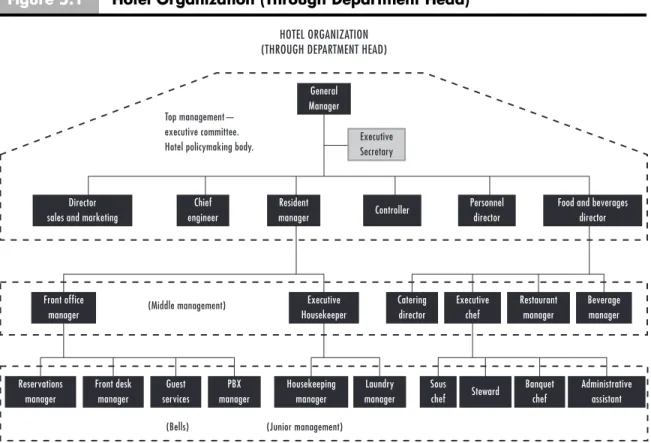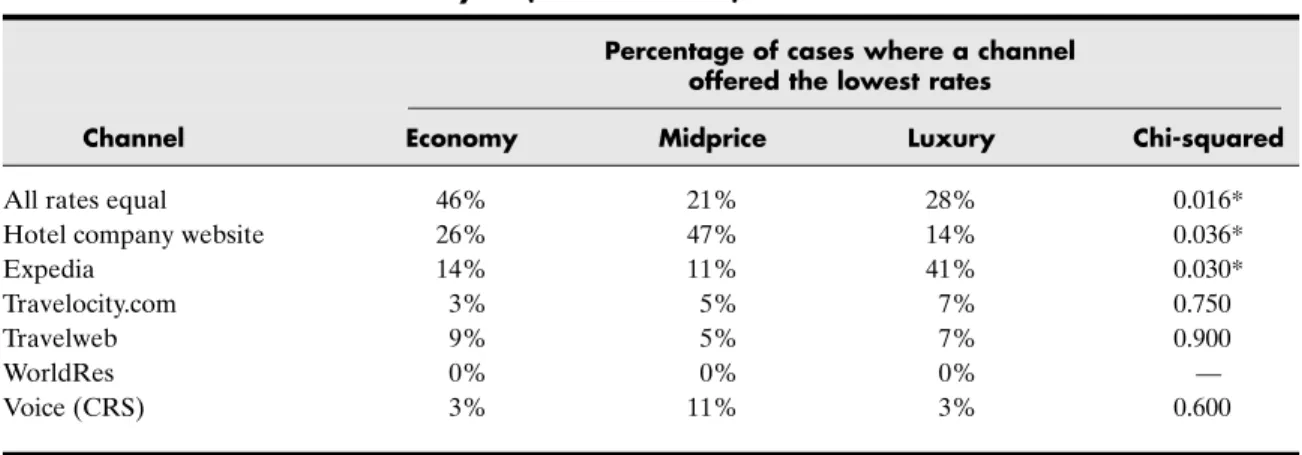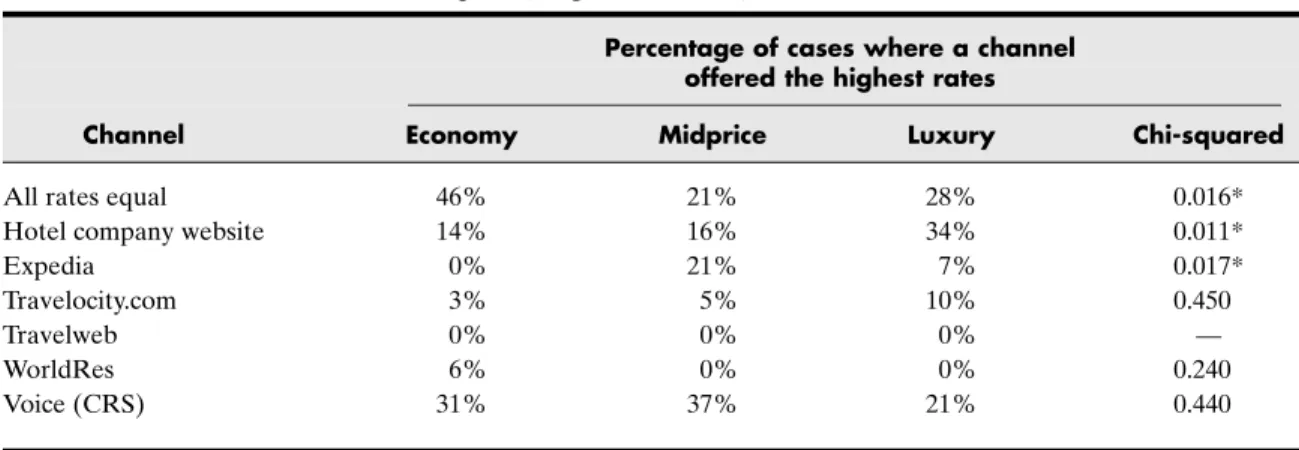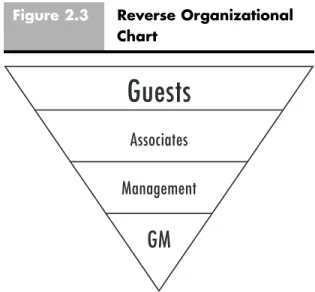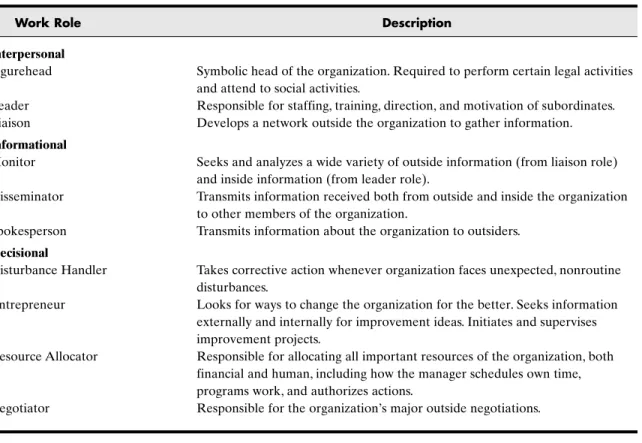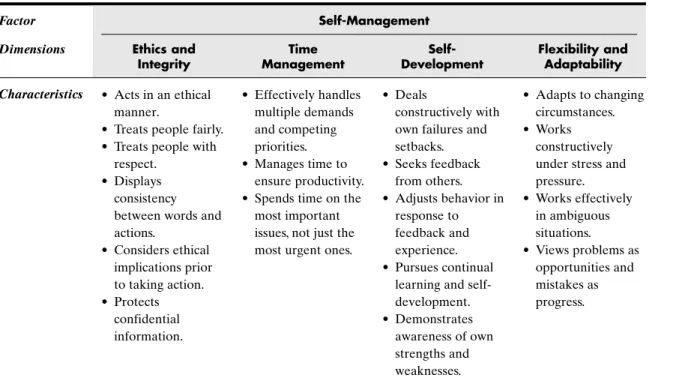No part of this publication may be reproduced, stored in a retrieval system, or transmitted in any form or by any means, electronic, mechanical, photocopying, recording, scanning, or otherwise, except as permitted under section 107 or 108 of the 1976 Act of States United Copyright Clearance, without the prior written permission of the Publisher, or authorization by payment of the appropriate fee per copy to the Copyright Clearance Center, Inc., 222 Rosewood Drive, Danvers, MA fax or online at www.copyright.com. Limitation of Liability/Disclaimer of Warranty: While the publisher and author have used their best efforts in the preparation of this book, they make no representation or warranty as to the accuracy or completeness of the contents of this book and specifically disclaim any implied warranty of merchantability or fitness for a particular purpose.
Driving Hospitality Into the Future 417 Christian Hardigree, Ellis Norman, Gail
Current Issues in Hospitality
The Strategic and Operational Roles of Human Resources—An Emerging
While there are many outstanding texts in the field of hotel management that address important parts of operations, particularly housekeeping, front office, and food and beverage, there are very few that attempt to address them in a balanced and in-depth manner. . way, every department in the hotel. In the final analysis, it's up to you to make the best use of your HMO IV, because as we said above, none of us know it all.
Vince Eade, Universiteit van Nevada, Las Vegas Harrah School of Hotel Administration, Las Vegas, NV. Christian Hardigree, University of Nevada, Las Vegas Harrah School of Hotel Administration, Las Vegas, NV.
Her understanding is especially important when I disappear to work on "the book" when we could be doing other, more fun things. As with previous editions, she understands the rhythms of an author's life and endures losing me to "the book" with style and grace.
INFLUENCES
The same trend has also changed the structure of the management and organization of the modern hotel. Awareness of the risk environment and the regulatory environment are factors that affect a hotel's ability to compete in the early part of the twenty-first century.
INTRODUCTORY READINGS
Suggested articles are drawn from recently published historical summaries of the hotel side of the United States hospitality industry. They also highlight other key forces in the development of the modern hotel business.
INTRODUCTION
Peter Anderson's overview of the spa industry provides insight into this fascinating service product. Statler's contributions to the modern hotel business are legendary, as he is widely credited with establishing and operating the first commercial hotel concept that recognized the realities of the early business traveler in the early twentieth century.
THE DEVELOPMENT COMPANY
THE FEASIBILITY STUDY
Once the feasibility study is completed, the developer is ready to move forward with the project. Often at this stage of the process, the developer buys an option on the land to lock it in until the remaining development steps can be completed – and to prevent competitors from buying the land.
CREATION OF THE OWNERSHIP ENTITY
Independent with strategic market affiliation (Luxury Hotels of America, Historic Hotels of America, etc.).
THE DEVELOPMENT AGREEMENT
SELECTING A FRANCHISE
SELECTING AN ARCHITECT
SELECTING A GENERAL CONTRACTOR
FINANCING THE PROJECT
RAISING THE EQUITY INVESTMENT FUNDS
To pursue this, the developer prepares an offering application document that complies with current securities and exchange legislation. If the architect's plans work as intended, if the general contractor has no problems with subcontractors, unions or permits, if all the furniture, fixtures and equipment arrive on time, if the weather cooperates and if the labor market is such that human resources are sufficient to open a hotel, then congratulations.
SELECTING THE MANAGEMENT
Based on their study and evaluation of the reports, documents and studies described above, they decide whether or not to offer financing to the developer. Once the loan is secured, the equity is raised and the building permit is issued by the city, the land purchase option is exercised and the purchase is complete.
CONCLUSION
It is important to remember that during the early stages of the process, the developer may put $1 million (US) or more at risk in the process before a final go/no-go decision is made. Only after the project has been approved and all financing has been secured can the developer start recovering the initial costs and collecting development fees.
PUTTING IT ALL
TOGETHER—THE STORY OF AN EXTENDED-STAY
The developer, as agent for the ownership LLC, also entered into a hotel management agreement with a management company to handle pre-opening marketing, pre-opening recruitment and training, and day-to-day management. daily operation of the hotel after opening. The development company then negotiated and selected a general contractor with extensive hotel construction experience to act on behalf of the developer as the owner's agent.
POSTSCRIPT
The size of the construction loan was above the lending limits of most small regional banks. Building permits were applied for and the building project presented to the City Development Commission for approval, along with other groups that have an interest in the finished building's appearance in relation to the area and the neighborhood.
A NEW MARKET MODEL
As competition has evolved and intensified, some of these organizations have adapted their structure and improved their services to meet the changing needs of independent hotels and the competitive dynamics of the marketplace. Holiday travel content, including packaging on the Internet, will rapidly increase as the currently fragmented holiday travel distribution network becomes more unified and efficient through consolidation.
MANAGEMENT COMPANIES AND
This is primarily due to brand competition and the fact that the business travel distribution network is more structured and driven by multinationals that want lower and more predictable costs. The second wave will affect the leisure market, and the changes can follow quickly.
BRAND DEVELOPMENT
In this brand-driven environment, the distinctive style and character of independent hotels became a competitive advantage, but only if they were able to meet recognized standards. Coupled with the ever-increasing costs of consumer marketing, these costs place a tremendous strain on the finances of independent hotels.
RESERVATION AFFILIATIONS—A
As a result, the need to associate independent hotels with a clearly defined, trusted brand has become more critical than ever. The corporate goals and management policies of traditional reservation organizations are influenced by the need to grow and meet shareholder profit demands.
CHARACTERISTICS OF A BRANDED DISTRIBUTION
The growing demographic and psychographic complexity of the global consumer market requires significant new expertise and resources in the areas of segmentation and analysis. Brand management also includes loyalty program management and the development of regional and global partners to strengthen and expand the effectiveness of the brand.
THE BENEFITS OF A
BRANDED DISTRIBUTION COMPANY
The same conflict can arise between the independent owners of a hotel property, who are focused on real estate issues, and the management company they hire. A franchise relationship can cause a similar conflict and place a financial and operational burden on an owner.
ARE THERE ANY DRAWBACKS TO A
Asset management, profitability and operational efficiency, on the other hand, are the main concerns of management companies, which are usually publicly traded companies with shareholder expectations that must be met. This is evident in Marriott's recent move to separate its owning and operating divisions, to the benefit of both.
BRANDED DISTRIBUTION COMPANY?
In contrast, the participation of independent owner/operators as shareholders in a brand distribution company enables them to move beyond these concerns and focus on their operation and the consumer - the source of their income and the basis of their success.
ENSURING COMPETITIVE ADVANTAGE
The OPM is the third employee after the general manager and the marketing director. When these visions are fused, the hotel guest is satisfied, the owner makes money, and the architect and interior designer can add the project to their list of successful accomplishments.
BLUEPRINTS
Opening a hotel is one of the most rewarding jobs in the hospitality industry, despite the frustrating and tiring aspects. OPM's role is to bring together the visions of the architect, interior designer, owner, operator and others.
MODEL ROOM
This requires 80 six-foot round tables, 800 seats, a stage for the main table, a dance floor, and a stage for the band. If ice machines are offered for guest self-service, they must produce an ample supply (£10 per room per 24 hours) for the number of guest rooms on that floor or floors.
PRE-OPENING STAFF PLAN
The bell bag storage room must be located between the porte cochere (entrance) and the elevators and contain 1 square foot of space for each guest room. If valet parking is provided, ensure that a suitable cashier station is located near the porte cochere.
PRE-OPENING BUDGET
The pre-opening personnel plan is a comprehensive document that tells who is hired, when they start, how much they get paid, and whether they are awarded relocation allowance and service costs. If employment has already begun and the opening date changes, the budget must be changed.
OPERATIONAL SUPPLIES AND EQUIPMENT (OS&E)
The largest purchase order—usually more than 100 pages long—is for a full-service kitchen and includes everything a chef needs to produce the menus sold at the hotel. To quantify the required sizes, a typical bell graph size curve for the specific country or region of the hotel is used.
PURCHASING, WAREHOUSING,
On the hotel administration side, OPM specifies office desks, chairs, cork and dry erase boards, conference tables, filing cabinets, safes, bulletproof windows for the general cashier, fax machines, copiers, cash and coin trays, and a set of flags for the outside poles . Chef and engineering staff uniforms are often dirty and must withstand many washes.
INSTALLATION OF THE OS&E
Banquet items include all of the above plus tables, chairs, staging, stage steps and railings, dance floors, carts, cutting boards, ice cutting trays, flags, podiums, portable bars, ice trays, pianos, and jack stands. These types of tasks must be performed for each of the 2,500 line items.
INTERIOR GRAPHICS PACKAGE
The linen order for guest rooms and F&B is taken to an external launderette for the first wash. Once the goods arrive on site, they are typically set up in the main ballroom for unpacking and distribution.
THIRD-PARTY VENDORS
For example, any clock radio must be disassembled, the rotary electrical connection removed, the 9 volt battery installed and the time set. After completing this task, they spent the next five working days installing 7,000 shower curtain hooks, 525 shower curtains and 525 shower liners.
HUMAN RESOURCES
OPENING DAY
In addition, from a consumer's perspective, purchasing travel products online has in many cases become faster, easier and more convenient than contacting a travel agent or calling a supplier directly. If Jupiter's 2007 forecast comes true, travel will be the top-selling online product, with volume almost double that of the current leading product, PC hardware (Forrester Research).
HOTEL PRICING ON THE WEB
Together, these factors have resulted in consumers associating online booking with good value, which in the consumer's mind means low prices. Research has shown that consumers who buy travel online almost always check more than one site before making a purchase.
SUMMARY OF RESEARCH FINDINGS
Both Expedia and Travelocity derive their data from GDSs, where most of the hotel brands represented in this study (being major hotel companies) can reasonably expect to be represented. Similarly, Travelweb gets its data from THISCO (The Hotel Industry Exchange Company), and so any hotel brand that uses this as their exchange service can be expected to make inventory available to sales through Travelweb.
RATES AVAILABLE
As can be seen from Table 1.6, hotels at the low end of the market are far more likely to offer consistent prices across all channels used. For economy brands, direct sales via the company's own website were the lowest 26 percent of the time.

DAWN OF A NEW WAY
In addition, there appears to be inconsistency in the rates offered via electronic channels. A small number of companies offer consistent pricing regardless of the channel used to make the booking.
CUSTOMER RELATIONSHIP
However, we believe that the current structure of the accommodation industry creates a "data ownership dilemma" that clearly limits the adoption of a comprehensive CRM approach.10 The three parties usually involved in hotel management - the owner, the management company and the brand (the brand refers to the provider franchises that mark a particular property (e.g. Hilton, Marriott, Six Continents) – have partially misaligned interests and consequently often resist sharing customer data, a prerequisite for successful CRM The following section shows why the current structure of the accommodation industry creates a barrier to successful CRM adoption in hotels.
THE POTENTIAL OF CRM IN THE LODGING
Finally, CRM is about customization or the ability to consistently treat different customers differently (Newell, 2000). Failure to understand the scope, essence and scope of CRM is likely to result in problems rather than its promised benefits.
INDUSTRY
Analysis of the lodging industry shows that many of the dominant hotel brands, driven in most cases by pressure from the marketing function, are implementing (or have already implemented) the technology infrastructure to support CRM. Only when the company reconfigures its operations to provide a comprehensive view of the customer and support consistent, highly personalized service at every customer touchpoint can it truly be considered a CRM.
THE LODGING
The technical challenge is diminishing due to recent developments in technology, including the rise of the application service provider (ASP) model. Note, however, that even if we remove technological challenges, we believe that the structure of the lodging industry creates serious obstacles to successful CRM.
INDUSTRY’S STRUCTURE
Two obstacles currently prevent this - the lack of IT system standardization and integration within each franchise, and the fact that at any one time there can be up to three parties holding a stake in the operations of a given property (the owner, the company of management and branding). At any one time there may be as many as three parties holding a stake in the operations of a particular property: (1) the owner, who holds title to the assets, is responsible for the mortgage payments and provides the capital for the operation; (2) brand, which brands.
THE DATA-OWNERSHIP DILEMMA
As a result, management companies have little incentive to support brand-level CRM initiatives by contributing data about clients staying at their properties. As a result, management companies effectively have an incentive to limit data disclosure and not participate in brand-level CRM initiatives.
CONCLUSIONS AND IMPLICATIONS
Only if there are significant changes in the structure or operating methods of the sector are the full benefits of a CRM approach likely to be realised. The first scenario is that the need to adopt a CRM approach will trigger changes in the ownership and management structure of the accommodation sector.
A CRM EXEMPLAR: WYNDHAM INTERNATIONAL
Management contracts also need to be rewritten to ensure brand protection as it extends customer knowledge back to the property level. In any case, given the potential proposed for accommodation companies, the dilemma of data ownership should be carefully considered to avoid failure.
OVERVIEW
The last potential scenario we envision is the emergence of an industry consortium that both develops and maintains the CRM infrastructure and standardizes the collection and distribution of customer data. The likelihood of an industry consortium developing and managing customer information for the benefit of the industry as a whole is low, as the industry's belief in the proprietary value of customer data, industry structure, privacy issues, and a culture that precludes trust in this area make collaboration unlikely.
SPA DEMAND
After assessing the demographics of spa demand, we discuss the types of spas currently popular in the industry, development and operational considerations, components of the spa experience, compensation issues, and trends in the spa industry.
HEALTH ISSUES AND SPA DEMAND
The number of visits to alternative care physicians in 1997 was greater than the total number of visits to traditional primary care physicians in the same year. The increasing popularity of alternative wellness modalities, the aging population and the strength of the economy are all factors supporting the growth of this trend.
SPA CLASSIFICATION
According to an industry study by the International Spa Association (Thacker, 2004), the destination spa industry represents only 1.6 percent of the total spa industry. Growth in the club spa segment of the spa industry is the lowest of all spa segments.
SPA OPERATIONS
Employees must understand customer service in the operational context of the property in which they are employed. Incentives, recognition and rewards for providing excellent customer service are an integral part of the training program.
HOW BIG SHOULD IT BE?
Massage rooms account for about 27 percent of the total space in North American spas, but 47 percent of spa revenue. Facial areas account for 19 percent of the total spa space and result in approximately 33 percent of the spa's total revenue.
SPA TRENDS
Some spas will compete at the extremes of luxury with an ever-increasing number of rare and proprietary products and services. Spas will continue to be popular, adding alternative therapies and combining traditional treatment with luxury and spa innovation.
BUSINESS PROBLEM ANALYSIS
PROBLEM
BACKGROUND/STATUS QUO
SOLUTIONS
Spa Industry Study: A Profile of the Spa Industry in the United States and Canada.” Toronto: Association Resource Center, Inc., Research and Strategy Division, p. Pioneers and Leaders of the Hospitality Industry.” In Introduction to Hotel and Restaurant Management, Robert A.
CLASSIC ORGANIZATION
The basic commonality is that most line workers are hands-on participants in the assembly and delivery of hotel services. For example, the engineering department maintains and repairs equipment that is essential to all hotel line functions, including food production equipment in the kitchen.
ORGANIZATIONS FOR THE MODERN ERA
The engineering department can thus be regarded as a real staff department that serves and supports one or all other departments in the hotel at any given time. This could be because engineering works best there in the organization of the hotel, or maybe this placement is just tradition.
THE ELEMENTS OF ORGANIZATIONAL
Taskability – The more similar the tasks of subordinates, the wider the control can be. Task certainty – The more routine and predictable work tasks are, the greater the control can be.
STATIC PRINCIPLES OF ORGANIZATIONAL
It is important for both superiors and subordinates to understand and agree on the level of responsibility, the freedom of action and the amount of authority that comes with a delegated task. The extent to which authority is delegated depends partly on the experience of the subordinate.
THE HOTEL FUNCTIONAL ORGANIZATIONAL
A subordinate's ability to successfully complete a task depends in part on the clarity of his or her superior's delegation instructions. Take action on your own; it is not necessary to communicate with me in this matter.
DESIGN
The primary function of the food and beverage department is, of course, to provide hotel guests with food and beverages. Accounting takes care of monitoring and preparing daily reports on the costs of food and drinks consumed in the hotel.
STRENGTHS AND WEAKNESSES OF A
Food and Beverage Cashiers report to the Assistant Controller of Operations and the Food and Beverage Controller reports directly to the Hotel Controller. The food and beverage department may be responsible for cooking and serving, but the accounting department is responsible for collecting revenue.
ORGANIZATION
The food and beverage controller and the food and beverage cashiers, who work in the accounting department, track the income and expenses of the food and beverage department. The food and beverage controller verifies the accuracy and fairness of all food and beverage receipts.
HOW MEETINGS HELP COORDINATE THE
Specialization at the departmental and sub-departmental level results in the need for leadership at the top of an organization. This is a particular problem for hotels due to the need for close interdepartmental cooperation in the provision of guest services.
ACTIVITIES OF A HOTEL
The demands and challenges of managing hotels are reflected in the complexity of the GM's job. It is based on one of the authors' research (Nebel, 1991) into the management effectiveness of hotel GMs.
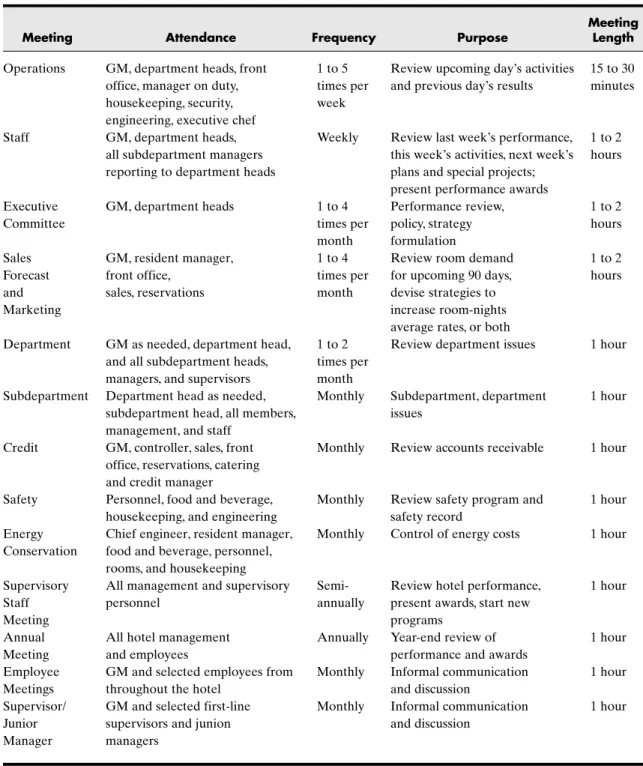
JOB DEMANDS AND RELATIONSHIP ISSUES
The two main contextual elements of the GM's job that affect specific job functions and generic managerial work roles are job demands and relationship issues. It is the symbiosis of these specific GM job functions and the generic managerial work roles that actually defines the job of the GM.
THE SHORT RUN
They also generally suggest the various managerial job roles that GMs must perform. Keeping up with this complicated short lead time business is undoubtedly the single most challenging and demanding aspect of the GM's job.
THE INTERMEDIATE RUN
So, the GM is basically fine-tuning the hotel's service strategy and fine-tuning and re-tuning the operating systems to ensure a smooth-running business. First, these relationships include an extensive network of hospitality and community contacts that can help the GM better understand the external environment of the hotel;
THE LONG RUN
Thus, these mid-term requirements include setting up a hotel organizational structure, systems and people capable of responding quickly and effectively to external stimuli while helping the hotel to meet its demanding day-to-day operational activities. obligations. In addition, mid-term job demands require the GM to develop communication channels and maintain relationships that extend beyond the hotel's specific domain.
ROLES PLAYED BY A GENERAL MANAGER
Combining the various managerial work roles with the specific job functions helps you gain a better understanding of the GM's job. We now move on to describe the managerial work roles that GMs most often fill as they perform their three primary functions.
MANAGERIAL WORK ROLES AS OPERATIONAL
Although the GMs studied were observed performing each of Mintzberg's ten managerial job roles, the interpersonal roles of leader and liaison, the informational roles of monitor and disseminator, and the decisive roles of concern handler, entrepreneur, and resource allocator. were found to be of particular importance. To effectively play this managerial job role of concern manager, GMs must have quick access to reliable internal information and, in turn, be able to quickly process and disseminate this information down in the organization.
MANAGERIAL WORK ROLES AS
That's why excellent GMs realize they're constantly in the spotlight throughout the workday. Subordinates automatically look for clues about what GMs consider important; thus, by deciding which operational issues to focus on, GMs send an unequivocal signal down the organization about what they care about.
ORGANIZATIONAL DEVELOPER
While functioning as operational controller, the GM's job role as resource allocator mostly revolves around allocating his or her own time to the many short-term demands of the job. GMs can of course allocate some of their hotel's financial and human resources to help solve short-term operational problems, but it is how they allocate their own scarce time that is crucial when referring to the short term. operational problems of the job.
MANAGERIAL WORK ROLES AS BUSINESS
In the short term, the GM's job function was described as that of an operational controller. In the long term, the general manager's job function has been described as maintaining the business.
COMPETENCY MODELS
Most competency models express traits and characteristics in behavioral terms on the basis that behavior is an observable manifestation of personality traits and characteristics. Competency models are less specific than job analysis, which is usually performed for specific positions, and models can cover an entire family of jobs.
USING COMPETENCY MODELS
Competency models can be used to identify possible successors to critical jobs by clarifying the job requirements and providing a method to assess a particular candidate's readiness. In addition, making HR decisions based on carefully developed competency models reduces legal challenges to these decisions.
LEADER COMPETENCIES FOR THE LODGING
The significant limitation of asking current managers to project future competencies is that they may be unable or unwilling to define the future differently from the present. As another example, Table 3.4 shows behavioral items and dimensions for the self-management factor.
KEY COMPETENCIES IDENTIFIED
Scheffe post-hoc tests revealed that this dimension was rated significantly lower than the other three strategic-positioning dimensions. On the other hand, skills that appear to be the likely core characteristics of future leaders are ethics, awareness of customer needs, time management, speaking with impact, commitment to quality and team orientation.
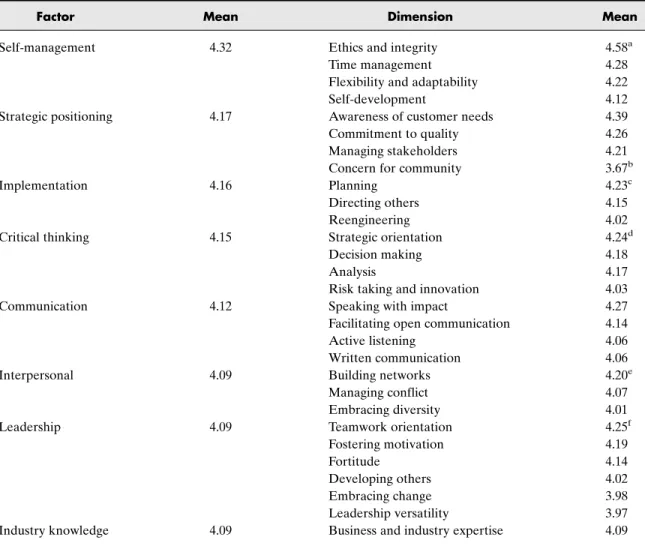
USING INDUSTRY-WIDE COMPETENCY MODELS
Marriott uses a systemic leadership development initiative called the Benchstrength Management System, which current senior managers use to build leadership skills. Throughout our career, there are always many tasks that we are obliged to complete and that are important to our company.
THE OTHER STUFF
Targeted development plans are created to help senior managers fill critical positions that are "stretch" assignments for high-potential managers. The Benchstrength management system provides Marriott with a consistent approach to evaluating its leadership potential and ensures that the company focuses on core capabilities that are key to future success.
IF IT WEREN’T HARD, EVERYONE WOULD
SIX DEGREES OF SEPARATION
WHAT MAKES THE MUSKRAT GUARD HIS
JUST SAY NO
These systems reflect their need for income and performance and promote the profit of the property. In either case, the sale may not reflect the best interests of the property.
BASIC CONCEPTS OF YIELD MANAGEMENT
AN OLD PROFESSION
To take an extreme example, the most valuable guest to a casino hotel—the high-stakes gambler—. The main reason for that limit is that yield management requires a forecast of demand for each rate category.
RATE CATEGORY CONTROLS
While the hotel in this example would prefer to sell all 500 rooms at a regular price, the hotel managers expect to be able to sell 380 (or more) rooms at a regular price. While this approach is well-intentioned, it only manages to keep the last 10 percent of hotel inventory for high-value guests, while a proactive approach could end discounts sooner and drive the hotel even higher. -paying guests (and income).

LENGTH-OF-STAY CONTROLS
The process of predicting a date's occupancy is important, but so is determining how to get the most revenue from a sold-out date. In such a case, some form of minimum control or other discrete control of dwell time is appropriate.

GROUPS: RATES, DATES, AND SPACE
The hotel may also suggest that the group's room block be smaller - for example in a situation where the group is attending a convention for which the dates have already been set. By cutting the group's room block in half, for example, the hotel actually brings in another $2,000 in revenue.
CASE STUDY: THE POWER OF
Even if the hotel had to lower the room rate to $60 to entice the group to move to other dates, the added value would be $12,000 instead of. This proposal is less effective from both the point of view of the hotel and the group, but it does increase the value of the group.
INFORMATION
Since the group is forecast to displace 140 rooms, which they would sell to transients at $100 each, the hotel gets back $20 of the displaced revenue for each room sold to transients instead of the group. This is achieved by encouraging the seller to book a deal that may not bring the hotel the most revenue, as in the case of the group proposing to book 200 rooms.
THE REVENUE
It should be noted that guests who want a shorter stay could be offered a room almost of their choice the week after the New Year.). Occupancy in the first week of January increased by 10 percentage points, almost entirely due to guests who arrived before the New Year and stayed at least four nights.
MANAGEMENT GAME
At one end of the technology spectrum, the Westin Santa Clara uses Sony's Contact-ME for remote videoconferencing from the concierge's house (a three-hour round trip) directly to the hotel's lobby monitor, some 80 miles away. . Les Clefs d'Or section in Hawaii, but there are several Les Clefs d'Or porters in Oahu, Kapolei and other popular tourist areas of the state.

LAST THOUGHTS
Since we are the only industry publication on Oahu located in one of the few cities without an official [Les Clefs d'Or] organization, we have an added burden to try to fill that void by holding regular gatherings where professionals in the industry can mix and share information, but unfortunately it is not monthly, and it rarely (due to travel complications) includes that of the outer islands. At the end of the chapter I provide a timetable of a typical working day in the life of a front office manager.
BELL STAND
The bellboy himself must be trained just like any other front-of-the-house personnel. It is the responsibility of the front office manager to provide the bellboys with the proper tools and information to perform their duties.
FRONT DESK
The guest may use this as the receipt and does not have to stop at the reception to check out (of course only if the billing is accurate). This is the last opportunity for the reception to get feedback from the guest.
GUEST RELATIONS
As with all front-of-the-house jobs, candidates should be well-polished and well-groomed and should have a service-oriented personality – the willingness to go the extra mile for guests and colleagues. The employees in the guest area are the eyes and ears of the hotel, but all employees and management must be aware of the importance of this area.
A DAY IN MY LIFE AS A FRONT OFFICE
To reiterate, training associates in the guest relations department is critical and perhaps more intensive than other departments. Service recovery and troubleshooting training is also key and should be an ongoing part of associate development.
MANAGER
It is the responsibility of the front office manager to provide such feedback, either in official reviews or in-the-moment coaching. The front desk manager suggests that the hotel advertises its check-in time from “say around 1:00 p.m.
HOUSEKEEPING
He provides an overview and an organizational perspective on the department with particular attention to the responsibilities of the various employees in the modern housekeeping department. In most cases, managing the household function is no longer the province of that type of domestic helper.
ENGINEERING
The number of employees for whom the CE is responsible varies greatly, mainly depending on the size of the hotel. This inventory instrument judges that the primary managerial style is in one of six categories (see below), with a secondary or backup style that is one or a combination of the others. the manager closely monitors subordinates and motivates by threats and discipline.
SECURITY
Establishing emergency management policies and procedures is also a fundamental aspect of the hotel security director's job. The security function must also help the hotel formalize a structure that connects all important parts of the hotel organization with the concept of total security for the organization, its employees and guests.
SUMMARY
In our effort to provide a high quality experience, we also discuss any error or poor experience that any of our guests may have experienced. As mentioned, we consider taking care of our employees just as important as taking care of our guests.
ORIGINS OF HOSPITALITY AND HOUSEKEEPING
This statement appears on a sign that is visible when one enters the resort: "Ladies and gentlemen served by ladies and gentlemen."
THE ROOMS DEPARTMENT
Two junior managers report to the executive housekeeper, the housekeeping manager and the laundry manager. Both the executive housekeeper and the front office manager report to the resident manager, who is a member of the property's executive committee.
